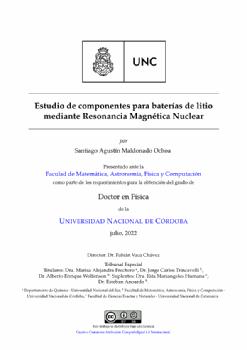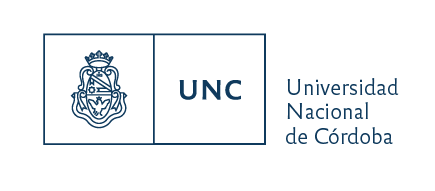Estudio de componentes para baterías de litio mediante resonancia magnética nuclear

Date
2022-07Author
Maldonado Ochoa, Santiago Agustín
Advisor
Vaca Chavez Fornasero, Fabián
Metadata
Show full item recordAbstract
Esta tesis se centra en la RMN como principal técnica de caracterización de materiales de interés para baterías de litio. Los materiales estudiados pueden separarse en dos tipos: medios porosos y litio metálico. Los materiales porosos se encuentran en casi todos los sistemas de almacenamiento electroquímico. Entre los factores clave para mejorar el rendimiento de estos materiales se encuentra la tortuosidad, que es una medida de la resistencia que ofrece la matriz al flujo de líquidos o iones por la misma. Este parámetro puede ser obtenido midiendo la auto-difusión de un líquido de prueba confinado en la matriz de interés. En esta tesis se estudió la influencia de la interacción líquido-matriz en la determinación de la tortuosidad de sistemas de sílice nanoporosa. Se observó que existe un tamaño de poro límite en el cual se puede determinar la tortuosidad del sistema. Además, se estudió la dinámica de electrolitos confinados en matrices de carbono nanoporosa, determinando la distribución de iones y de solvente en los distintos entornos. El litio metálico es considerado el material de ánodo ideal para baterías debido a su alta densidad de energía, sin embargo, el crecimiento de microestructuras durante el proceso de carga/descarga compromete el rendimiento de la batería. En esta tesis se realizaron cálculos computacionales para estudiar el impacto de la morfología de las microestructuras en la forma de línea del espectro de RMN. Además, se desarrolló el hardware necesario para la medición de celdas electroquímicas in-situ, y se utilizó para caracterizar el crecimiento de microestructuras en distintas condiciones.
his thesis focuses on NMR as the main technique for characterization of materials of interest for lithium batteries. The materials studied can be separated into two types: porous media and lithium metal. Porous materials are ubiquitous in electrochemical storage systems. Tortuosity is one of the key factors in improving the performance of these materials, provided that it is a measure of the resistance offered by the matrix to the flow of liquids or ions through the pores. This parameter can be obtained by measuring the self-diffusion of a test liquid confined in the matrix of interest. In this thesis, the influence of liquid-matrix interaction on the determination of the tortuosity of nanoporous silica systems was studied. It was observed that there is a limiting pore size at which the tortuosity of the system can be determined. Moreover, the dynamics of electrolytes confined in nanoporous carbon matrices was studied, determining the ion and solvent distribution in the different environments. Lithium metal is considered the ideal anode material for batteries due to its high energy density, however, the growth of microstructures during the charge/discharge process compromises battery performance. In this thesis, computational calculations were performed to study the impact of microstructure morphology on the line shape of the NMR spectrum. In addition, the hardware for in-situ electrochemical cell measurements was developed and used to characterize the growth of microstructures under different conditions.
Collections
The following license files are associated with this item:




